Address
304 North Cardinal
St. Dorchester Center, MA 02124
Work Hours
Monday to Friday: 7AM - 7PM
Weekend: 10AM - 5PM
Address
304 North Cardinal
St. Dorchester Center, MA 02124
Work Hours
Monday to Friday: 7AM - 7PM
Weekend: 10AM - 5PM
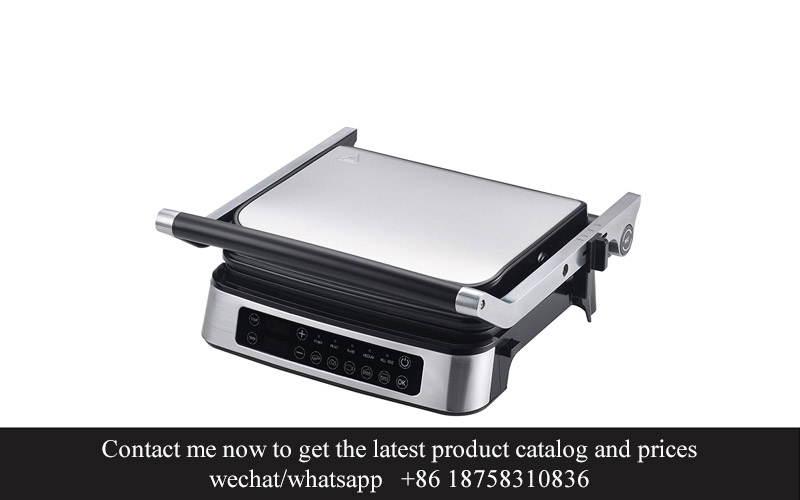
In the bustling world of commercial kitchens, where efficiency meets quality, the sandwich press has become more than just a staple in the food service industry. It’s a tool that can make or break the sandwich experience for customers. With the rise of health-conscious consumers and the demand for consistency in food preparation, the quest for the perfect sandwich press has intensified. Enter the NSF approved commercial sandwich press, a beacon of quality and innovation in the culinary landscape. Let’s delve into the features that make these presses stand out, their impact on the industry, and the future trends shaping their technology.
Commercial sandwich presses have quietly transformed the culinary landscape, emerging as a game-changer in the kitchen. Once the domain of simple, single-slot countertop appliances, these presses have evolved into sophisticated machines that cater to a variety of culinary needs. From busy cafes to bustling restaurants, the demand for high-quality, efficient sandwich presses has surged.
In recent years, the rise of fast-casual dining has played a significant role in the surge of commercial sandwich presses. With customers seeking quick, yet satisfying meals, these appliances have become essential for creating consistently perfect sandwiches. The convenience and speed of these presses have not gone unnoticed by chefs and kitchen managers alike.
The commercial sandwich press market is now brimming with innovative designs that not only streamline the sandwich-making process but also enhance the final product. Modern presses come with features such as adjustable heating elements, non-stick surfaces, and even programmable settings, allowing for precision and control over the cooking process.
Moreover, the versatility of commercial sandwich presses extends beyond just sandwiches. Many models are capable of grilling, toasting, and searing, making them valuable tools for preparing a wide range of food items, from paninis to grilled cheese. This adaptability has helped these presses carve out a niche in various kitchen environments.
Another factor contributing to the rise of commercial sandwich presses is the emphasis on health and wellness in today’s food culture. With a growing number of consumers looking for nutritious, whole-grain options, sandwich presses offer a perfect solution for crafting delicious, low-fat, high-protein sandwiches. The ability to cook ingredients to perfection without the need for excessive oil or butter is a significant draw for health-conscious diners.
The convenience of commercial sandwich presses is also a major selling point. These appliances can be easily integrated into existing kitchen setups and require minimal maintenance. Their compact size means they can be placed on countertops, under prep tables, or even in a kitchen island, without taking up valuable space.
As the demand for these presses has increased, so too has the competition. Manufacturers are constantly pushing the boundaries of design and functionality, leading to a diverse array of options for buyers. This competition has also resulted in more affordable pricing, making it easier for small businesses and independent restaurants to invest in high-quality sandwich presses.
Safety and quality are paramount in the food service industry, and the introduction of NSF (National Sanitation Foundation) approval for commercial sandwich presses has been a game-changer. NSF certification ensures that these presses meet strict safety and sanitation standards, giving operators peace of mind that their equipment is not only efficient but also safe for use in a commercial kitchen.
With NSF approval, sandwich presses are now not just a convenience, but a symbol of reliability. This certification process involves rigorous testing for materials, construction, and performance, guaranteeing that these appliances can withstand the demands of a busy kitchen. The assurance that an NSF approved commercial sandwich press has passed these stringent evaluations means operators can focus on their business, knowing their equipment is up to par.
As the trend towards health and wellness continues to grow, the demand for high-quality, innovative commercial sandwich presses is only expected to rise. The convenience, versatility, and safety offered by these appliances make them an indispensable part of modern kitchens. From the bustling streets of New York City to the serene suburbs, the rise of the commercial sandwich press has indeed changed the game in the heart of the kitchen.

In today’s fast-paced food service industry, the importance of quality and safety cannot be overstated. One way businesses ensure these standards is through the use of NSF approved commercial sandwich presses. But what does NSF approval actually mean, and why is it such a significant mark of quality and safety?
NSF International, originally known as the National Sanitation Foundation, is a non-profit organization that has been setting standards for public health and safety since 1944. They conduct rigorous testing and certification processes to ensure that products meet specific criteria for safety, quality, and performance. When a commercial sandwich press earns NSF approval, it means it has been thoroughly evaluated and meets or exceeds these stringent standards.
One of the key aspects of NSF approval is the focus on material safety. The materials used in the construction of the sandwich press must be free from harmful chemicals that could leach into the food. This is particularly important in a sandwich press, where direct contact with food is constant. NSF certification ensures that the materials used are non-toxic and will not contaminate the food being prepared.
Another critical factor in the certification process is the design and manufacturing of the sandwich press. NSF evaluates the construction for durability, ease of cleaning, and the prevention of cross-contamination. The design must allow for efficient and thorough cleaning, which is essential in maintaining a hygienic kitchen environment. The sandwich press must also be designed to prevent any potential for the food to come into contact with the heating elements, which could lead to burns or other safety hazards.
Energy efficiency is also a consideration in the NSF approval process. The sandwich press must be designed to minimize energy consumption without compromising its performance. This not only helps businesses reduce their operational costs but also contributes to a more sustainable and eco-friendly kitchen environment.
In terms of performance, NSF approval requires that the sandwich press meets specific criteria for even heating, consistent sandwich size, and reliable operation. This means that the press must deliver consistent results every time, ensuring that the final product is both appetizing and safe to consume.
The safety aspect of NSF approval extends beyond the product itself. It also includes the training and knowledge of the staff who will be using the sandwich press. NSF offers educational resources and training programs to help food service professionals understand the proper use and maintenance of their equipment. This ensures that the sandwich press is not only safe to use but also that operators are well-equipped to handle any potential issues that may arise.
For consumers, the NSF mark is a trusted symbol of quality and safety. It provides peace of mind that the sandwich press has been independently tested and certified to meet high standards. This is especially important in the food service industry, where reputation and customer trust are paramount.
The process of earning NSF approval is not just about meeting standards; it’s about committing to a continuous improvement process. Companies that have their sandwich presses NSF certified must adhere to regular audits and evaluations to maintain their certification. This ongoing commitment to quality and safety is a testament to the brand’s dedication to providing a reliable product.
In conclusion, NSF approval is more than just a certification; it’s a comprehensive assessment of a commercial sandwich press’s safety, quality, and performance. It signifies that the product has been thoroughly evaluated by a respected third-party organization, ensuring that it meets the highest standards in the industry. For food service professionals and consumers alike, choosing an NSF approved commercial sandwich press is a choice that prioritizes both health and taste.
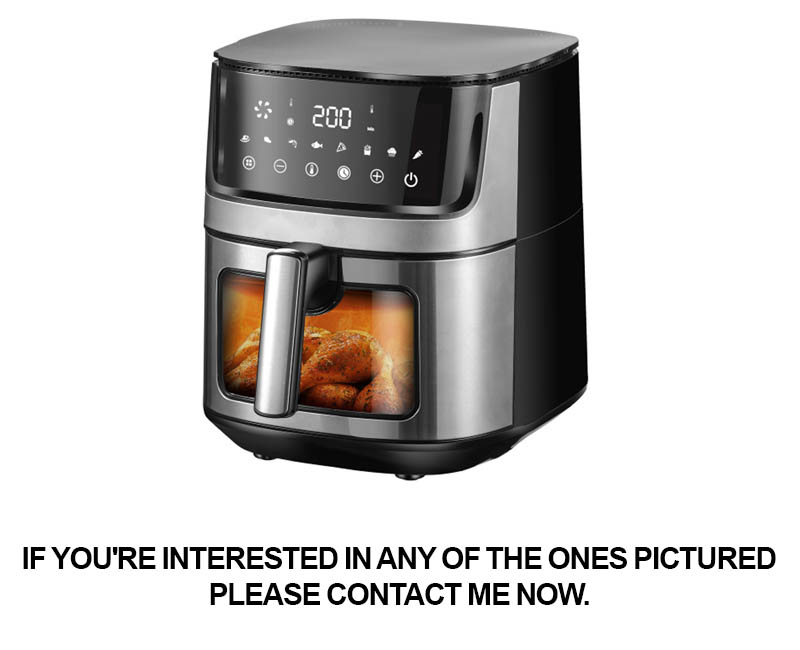
In the bustling world of commercial kitchens, where efficiency and safety are paramount, selecting the right sandwich press can be a game-changer. When it comes to choosing an NSF approved commercial sandwich press, there are several key features that should not be overlooked. Here’s what to look for:
Sturdy Construction and DurabilityA high-quality commercial sandwich press is built to withstand the rigors of a busy kitchen. Look for one with a robust build, typically made from stainless steel or heavy-duty aluminum. These materials not only ensure the press can handle constant use but also resist corrosion and maintain their appearance over time.
Even Heat DistributionThe key to a perfectly toasted sandwich is even heat distribution. Ensure that the press you’re considering has a consistent heat source, which could be electrically heated plates or a ceramic element. A press with a non-stick surface is also beneficial, as it prevents the bread from sticking and ensures clean, easy clean-up.
Adjustable Heat SettingsCommercial kitchens cater to a variety of tastes and preferences. An NSF approved sandwich press with adjustable heat settings allows for customization. Whether you’re making a classic grilled cheese or a gourmet panini, being able to control the temperature ensures your customers get the perfect toast level every time.
Easy to Clean DesignIn a commercial kitchen, time is of the essence, and cleaning is a critical part of maintaining a hygienic environment. A sandwich press with a design that facilitates quick and easy cleaning is a must. Non-stick surfaces, removable plates, and components that can be easily washed are all features that contribute to a press that’s low maintenance.
Safety FeaturesSafety should always be a top priority in commercial kitchens. An NSF approved sandwich press will come with built-in safety features like automatic shut-off, which turns off the press after a certain period of inactivity. This not only prevents overheating but also reduces the risk of accidents.
Size and CapacityConsider the size and capacity of the sandwich press that best fits your kitchen’s needs. A larger press can handle more sandwiches at once, which is ideal for high-volume operations. However, a compact model may be more suitable for smaller kitchens or when space is limited.
Ease of UseEven the most advanced features won’t matter if the press is complicated to use. Look for a sandwich press that is user-friendly, with intuitive controls and a straightforward design. A press that requires minimal training for your staff to operate efficiently can significantly reduce downtime and improve productivity.
Brand Reputation and WarrantyThe brand you choose can say a lot about the quality and reliability of the product. Opt for a brand with a good reputation in the commercial kitchen equipment industry. Additionally, check for a comprehensive warranty that covers parts and labor, providing peace of mind in case of any issues.
Customer Reviews and RecommendationsBefore making your final decision, take the time to read customer reviews and seek recommendations from other kitchen professionals. Real-world experiences can provide valuable insights into the performance and longevity of different sandwich presses.
Energy EfficiencyEnergy costs can add up in a commercial kitchen, so choosing an energy-efficient sandwich press can be a smart financial decision. Look for models that are designed to minimize energy consumption without compromising on performance.
Maintenance RequirementsRegular maintenance is essential for keeping your commercial sandwich press in top condition. Consider the maintenance requirements of the press you’re interested in, including the frequency of cleaning and any specific care instructions to ensure the longevity of the appliance.
By focusing on these features, you can select an NSF approved commercial sandwich press that not only meets the demands of your kitchen but also provides a safe, efficient, and enjoyable experience for your customers.

In today’s fast-paced food service industry, the design of commercial sandwich presses has evolved to meet the demands of efficiency, consistency, and convenience. Here’s what sets these innovative sandwich presses apart:
The sleek and modern aesthetics of these presses are not just for show; they’re designed to enhance the overall operation of a kitchen. With a focus on minimalism, these presses often feature a streamlined look that fits seamlessly into any commercial setting, from bustling cafes to busy restaurants.
One standout feature is the adjustable pressure system. No longer do chefs have to guess at the perfect amount of pressure needed to achieve that golden-brown crust on their sandwiches. Modern sandwich presses come with precise pressure settings that allow operators to customize the cooking process to their specific needs, ensuring consistent results every time.
Durability is a key factor in the design of these commercial sandwich presses. High-quality stainless steel construction is the norm, providing not only a sturdy foundation but also an easy-to-clean surface that withstands the rigors of a commercial kitchen environment. The robust build ensures that the press will last through countless uses without compromising its performance.
The inclusion of non-stick surfaces has revolutionized the sandwich-making process. These surfaces not only prevent food from sticking, but they also make cleanup a breeze. Chefs can spend less time dealing with messes and more time focusing on the art of creating mouthwatering sandwiches.
Many of these presses now come with temperature control features. This allows operators to set the exact temperature needed for each type of sandwich, ensuring that the cooking process is optimized for each ingredient. From melting cheese to toasting bread, precise temperature control guarantees a perfect sandwich every time.
Safety is paramount in commercial kitchen equipment, and the latest sandwich presses don’t skimp on features that protect users. From heat-resistant handles to automatic shut-off functions, these innovations ensure that operators can work safely without the risk of burns or accidents.
The size and shape of the sandwich press are also important. Some models are designed to make large, hero sandwiches, while others cater to the demand for mini or slider-sized creations. The ability to customize the size of the sandwiches is not just about variety; it’s about meeting the diverse preferences of customers.
Ease of use is a hallmark of innovative sandwich press design. From the simple flip-top mechanism to the inclusion of drip trays that catch any excess oil or sauce, these presses are thoughtfully designed to make the operation as straightforward as possible.
In terms of energy efficiency, modern sandwich presses are designed to use less power without sacrificing performance. With the rising cost of energy, this is a significant consideration for businesses looking to reduce their operational expenses.
Innovation also extends to the way these presses are maintained. Many come with removable parts that are dishwasher safe, making the cleaning process not only easier but also more efficient.
Lastly, the versatility of these sandwich presses is undeniable. Some models are designed to be used with a variety of bread types, from baguettes to brioche, and even gluten-free options. This flexibility means that operators can cater to a wider range of dietary preferences and restrictions.
In conclusion, the design of modern NSF approved commercial sandwich presses has been refined to perfection, offering a combination of efficiency, safety, and versatility that is a game-changer in the kitchen. From the smallest detail to the overall build, these presses are engineered to stand out in a crowded market, delivering exceptional performance and reliability.
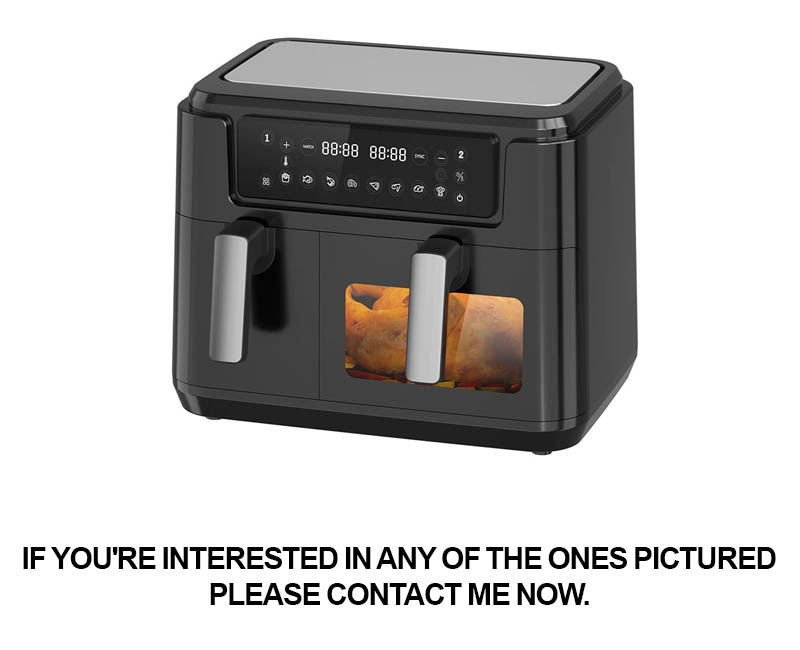
In the bustling world of food service, the introduction of NSF certified sandwich presses has been nothing short of revolutionary. These appliances have not only streamlined the process of preparing sandwiches but have also elevated the quality and consistency of the final product. Let’s delve into the significant impact these presses have had on the industry.
The Consistency Conundrum SolvedOne of the most notable impacts of NSF certified sandwich presses is the newfound consistency in sandwich preparation. In the past, chefs often relied on manual pressure or inconsistent heat sources to achieve a perfect sandwich. With these presses, the uniformity of the bread and the even distribution of fillings have become standard, ensuring that every sandwich served meets the high expectations of customers.
Enhanced Efficiency in High-Volume OperationsFor restaurants and cafes that operate at a high volume, time is of the essence. The efficiency of NSF certified sandwich presses cannot be overstated. These appliances can quickly and easily press multiple sandwiches at once, reducing wait times and increasing the overall throughput of the kitchen. This efficiency is a game-changer for establishments looking to keep up with the demand without compromising on quality.
Improved Hygiene StandardsIn the food service industry, hygiene is paramount. NSF certification is a testament to the stringent safety and sanitation standards that these sandwich presses meet. With features like removable parts for easy cleaning, non-stick surfaces to prevent food particles from sticking, and durable materials that resist corrosion, these presses help maintain a clean and safe kitchen environment.
Customization and VersatilityThe food service industry is all about catering to diverse tastes and preferences. NSF certified sandwich presses often come with adjustable pressure settings, allowing chefs to tailor the sandwich’s texture to their specific recipe. Whether you’re crafting a classic BLT or a gourmet avocado toast, these presses can accommodate a wide range of fillings and bread types, making them a versatile tool in any kitchen.
Quality Assurance for ConsumersWhen customers see the NSF logo on a sandwich press, they can be confident that the equipment has been rigorously tested for safety and quality. This certification builds trust and can be a significant selling point for restaurants looking to differentiate themselves in a competitive market. Knowing that the sandwiches are made with reliable, high-quality equipment can encourage repeat business and positive word-of-mouth referrals.
Reduced Energy ConsumptionModern NSF certified sandwich presses are designed with energy efficiency in mind. By optimizing heat distribution and minimizing unnecessary energy use, these appliances help reduce the carbon footprint of food service operations. This not only aligns with the growing demand for sustainable practices but also leads to lower utility bills for businesses.
Training and Ease of UseFor many kitchens, the adoption of new equipment can be a challenge. However, NSF certified sandwich presses are typically designed with user-friendliness in mind. With clear instructions and intuitive controls, staff can quickly learn how to operate these presses, minimizing downtime and ensuring that the kitchen can continue to produce high-quality sandwiches without delay.
Increased Menu VarietyThe versatility of these sandwich presses has opened up new possibilities for chefs to experiment with their menus. From pressed paninis to grilled cheese with an array of creative fillings, these appliances have allowed restaurants to offer a wider variety of sandwich options, keeping the menu fresh and appealing to customers who seek unique dining experiences.
ConclusionIn summary, the impact of NSF certified sandwich presses on the food service industry has been profound. They have revolutionized the way sandwiches are prepared, ensuring consistency, efficiency, and hygiene. With their ability to customize and their energy-saving features, these presses have become an essential tool for any establishment aiming to serve exceptional sandwiches while maintaining a sustainable and productive kitchen environment.
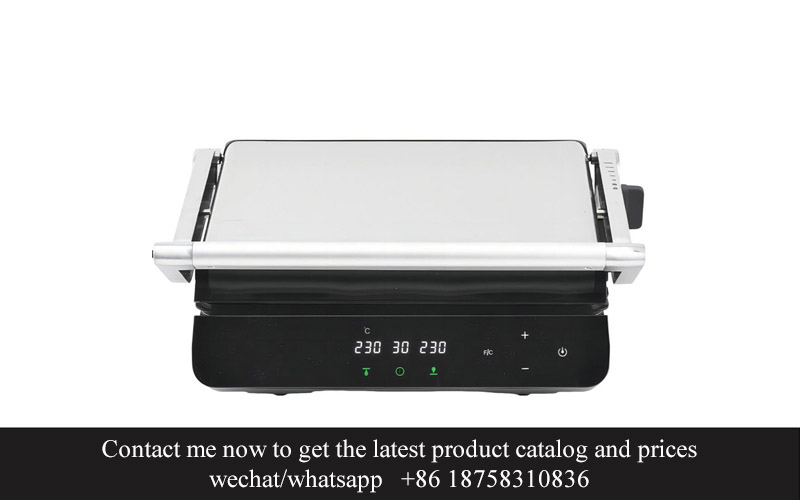
In the world of commercial kitchen equipment, the right sandwich press can be a game-changer. With NSF approval, certain brands and models have earned a reputation for excellence. Here’s a look at some of the top choices that food service operators are turning to.
Gourmet Sandwich PressesGourmet has long been a leader in the commercial kitchen equipment market, and their sandwich presses are no exception. Known for their durability and precision, Gourmet’s models offer features like adjustable heat settings and non-stick surfaces, ensuring consistent results and easy cleanup.
Commercial Chef Sandwich PressCommercial Chef is another brand that has made a name for itself in the industry. Their sandwich presses are designed with the busy kitchen in mind, featuring fast heat-up times and sturdy construction. The Commercial Chef line also includes models with interchangeable plates for a variety of sandwich styles.
Hamilton Beach Commercial Sandwich PressHamilton Beach has expanded its commercial kitchen offerings to include sandwich presses that are both efficient and reliable. These presses often come with features like a locking mechanism to keep the sandwich secure during pressing and adjustable heat controls for perfect browning.
West Bend Commercial Sandwich PressWest Bend is a brand that combines functionality with affordability. Their sandwich presses are designed to withstand heavy use, with durable materials and easy-to-use controls. Whether you’re making breakfast sandwiches or lunchtime subs, West Bend’s models are a popular choice for operators looking for a budget-friendly option.
Staub Sandwich PressStaub is a French brand that has brought its culinary expertise to the commercial kitchen with their sandwich presses. These models are not only stylish but also practical, with cast iron construction that retains heat and a non-stick surface that makes for quick and easy cooking.
Cuisinart Commercial Sandwich PressCuisinart is a household name in kitchen appliances, and their commercial sandwich presses are no different. These presses are designed with the home chef in mind but are robust enough for commercial use. They often include features like a built-in thermometer and a safety lock to prevent accidental operation.
Breville Commercial Sandwich PressBreville is known for its high-quality kitchen appliances, and their sandwich presses are no different. These models are often equipped with advanced features like temperature control and a steam release system to ensure even cooking and a perfect crust on every sandwich.
Sunbeam Commercial Sandwich PressSunbeam has a range of sandwich presses that cater to various needs in the food service industry. From compact models perfect for countertop use to larger units designed for high-volume operations, Sunbeam’s selection offers versatility and reliability.
In conclusion, the demand for NSF approved commercial sandwich presses has surged, and it’s no surprise that top brands like Gourmet, Commercial Chef, Hamilton Beach, West Bend, Staub, Cuisinart, Breville, and Sunbeam have stepped up to meet the demand. Each brand offers unique features and design elements that set them apart, making it easier for food service operators to choose the perfect sandwich press for their establishment.
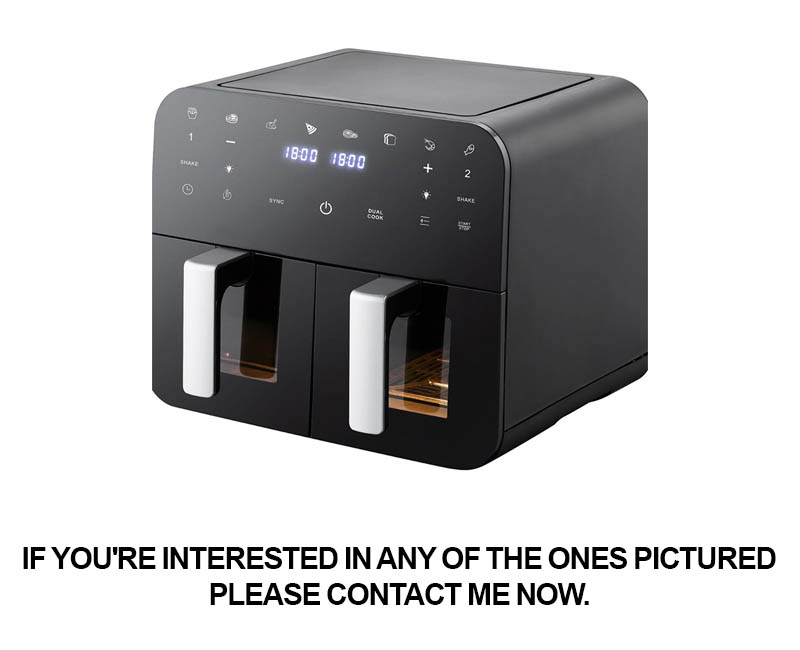
In today’s competitive foodservice industry, the importance of NSF approval for commercial sandwich presses cannot be overstated. It’s not just about meeting standards; it’s about building trust with customers and setting your business apart from the rest. Here’s why NSF approval matters for your business:
Endorsed by Experts: The National Sanitation Foundation (NSF) is a globally recognized authority on public health and safety. When your commercial sandwich press carries the NSF mark, it’s a stamp of approval from a respected organization. This endorsement can significantly boost your brand’s credibility.
Customer Confidence: Food safety is paramount in the foodservice industry. Consumers are increasingly aware of the importance of clean and safe eating environments. An NSF-certified sandwich press ensures that your product is held to high standards, which can foster trust and confidence among your customers.
Legal Compliance: Compliance with health codes and regulations is non-negotiable in the food industry. NSF certification confirms that your sandwich press meets or exceeds the stringent criteria set by health departments. This can protect your business from potential fines and legal issues that could arise from non-compliance.
Consistency in Quality: NSF certification requires manufacturers to adhere to a rigorous testing process. This means that an NSF-approved commercial sandwich press will consistently deliver high-quality performance, which is crucial for maintaining a professional kitchen environment.
Longevity and Reliability: A sandwich press that carries the NSF label is likely to be built with durable materials and innovative technology. This can translate into a longer lifespan for your equipment, reducing the frequency and cost of replacements.
Enhanced Brand Reputation: The NSF certification can serve as a marketing tool for your business. It differentiates your brand from competitors and highlights your commitment to excellence in food preparation and safety.
Streamlined Maintenance: Equipment that meets NSF standards often comes with detailed maintenance guidelines. This can help your kitchen staff maintain the sandwich press efficiently, ensuring optimal performance and minimizing downtime.
Cost Savings: While the initial cost of an NSF-certified sandwich press may be higher than non-certified models, the long-term savings can be substantial. Reduced maintenance, fewer breakdowns, and the potential to avoid fines due to non-compliance all contribute to a more cost-effective operation.
Increased Marketability: For businesses looking to expand into new markets or cater to a more health-conscious demographic, having an NSF-approved sandwich press can be a major selling point. It opens up opportunities to attract a wider range of customers who value quality and safety.
Innovation and Advancement: The NSF certification process encourages manufacturers to innovate and improve their products. This means that an NSF-certified sandwich press is likely to be equipped with the latest features and technologies, keeping your business ahead of the curve.
Health and Safety: Above all, NSF approval is about health and safety. It ensures that your sandwich press is designed to prevent food contamination and maintain the highest standards of hygiene. This is essential for protecting both your customers and your staff.
In summary, NSF approval for your commercial sandwich press is a multifaceted benefit that touches on quality, reliability, compliance, and brand reputation. It’s an investment in your business that can pay dividends in customer trust, legal compliance, and operational efficiency.
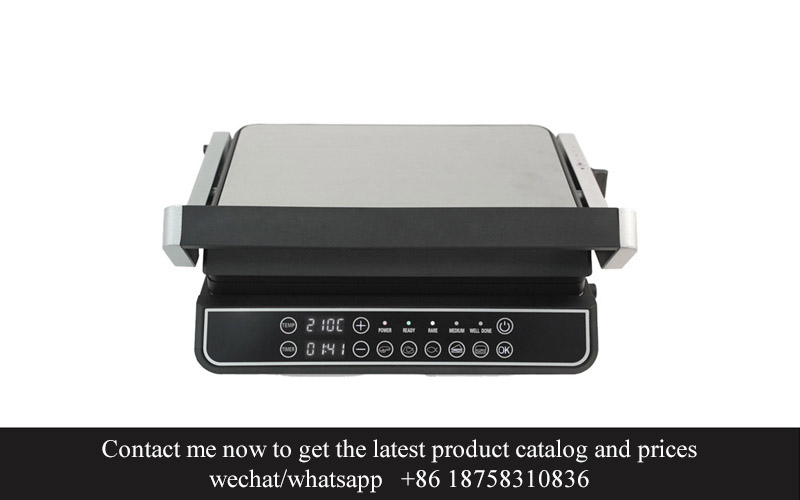
Incorporating an NSF Certified Sandwich Press into your kitchen can be a game-changer for your business, offering both efficiency and quality. Here’s how to seamlessly integrate this essential piece of equipment:
Consider the Space: Before bringing in your new NSF Certified Sandwich Press, assess the available space in your kitchen. Measure the dimensions to ensure it fits comfortably without overcrowding your workspace. Remember, a well-organized kitchen is a productive kitchen.
Safety and Sanitation: An NSF Certified Sandwich Press is not just about quality, but also about safety and sanitation. Ensure that the area where you plan to place the press is easy to clean and maintain. Look for models with non-stick surfaces and removable parts for easy cleaning.
Power and Heat Distribution: The performance of a sandwich press is heavily reliant on its heating elements and power source. Check the specifications of the press you’re considering to ensure it provides even heat distribution and has the power to cook sandwiches to perfection. Consistent heat is key to achieving that golden-brown crust.
Training Your Staff: Introducing a new piece of equipment is an opportunity to train your staff on best practices. Ensure they understand how to properly use the sandwich press, including loading the sandwiches and adjusting the heat settings. A well-trained team can significantly enhance the quality and consistency of your product.
Menu Integration: Think about how the sandwich press fits into your menu. Are you looking to offer a variety of sandwich options, or will this be a staple item? Consider the variety of breads and fillings that the press can handle and how it complements your existing offerings.
Regular Maintenance: Just like any other kitchen appliance, a sandwich press requires regular maintenance to keep it in top condition. Establish a routine for cleaning, inspecting, and maintaining the press to prevent any potential issues that could affect its performance or the quality of your sandwiches.
Accessibility: Make sure the sandwich press is easily accessible to your staff. Placing it in a spot that’s visible and convenient will encourage its use and ensure it’s always ready for action during peak hours.
Customer Feedback: Once the sandwich press is up and running, gather feedback from your customers. They can provide valuable insights into the quality and consistency of the sandwiches being served. Use this feedback to make any necessary adjustments to your preparation or service.
Marketing the New Feature: Finally, don’t forget to market the new addition to your kitchen. Highlight the benefits of the NSF Certified Sandwich Press, such as its ability to produce high-quality sandwiches quickly and efficiently. This can be a great selling point for new and returning customers alike.
By carefully considering these factors, you can successfully integrate an NSF Certified Sandwich Press into your kitchen, enhancing both your operational efficiency and the customer experience. Remember, the key is to plan ahead, train your staff, and maintain the equipment to ensure a seamless transition and long-term success.
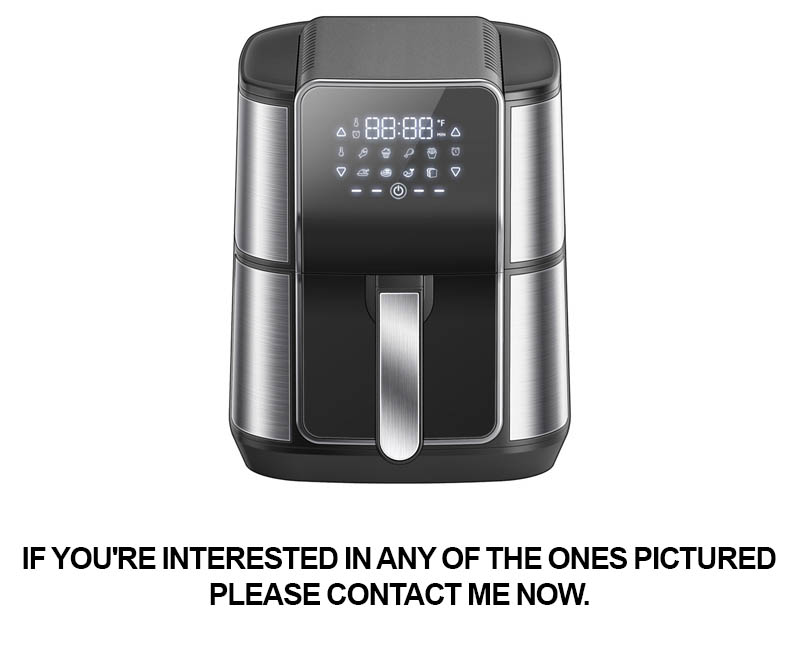
In the world of commercial kitchen equipment, the decision to invest in an NSF-approved sandwich press can be a pivotal one. It’s not just about the immediate convenience or efficiency it brings to your establishment, but also about the long-term benefits that such an appliance can offer. Let’s delve into the cost-benefit analysis of investing in an NSF-approved sandwich press and explore why it might just be worth the investment.
The initial cost of an NSF-approved sandwich press can vary widely depending on the brand, features, and size. However, it’s important to consider the quality and durability that comes with this certification. These presses are built to withstand the rigors of a busy kitchen environment, which means they are less likely to break down and require costly repairs or replacements in the future.
When evaluating the cost, think about the number of sandwiches you serve daily. A high-quality sandwich press can streamline your sandwich-making process, potentially reducing labor costs over time. With less time spent on the prep and cooking of sandwiches, your staff can focus on other tasks, improving overall efficiency.
Energy efficiency is another critical factor. An NSF-approved sandwich press is designed to operate at optimal energy levels, reducing your electricity bills. While the upfront cost might be higher than a standard model, the savings on energy over the lifespan of the press can be substantial.
The reputation of your business is tied to the quality of the food and service you provide. An NSF certification is a stamp of approval that signifies your commitment to safety and quality. This can translate into customer trust and loyalty, which is invaluable. Word-of-mouth referrals and positive reviews can lead to increased foot traffic and repeat business, making the investment in an NSF-approved sandwich press a strategic move for your brand’s image.
Maintenance is often overlooked in cost-benefit analyses, but it’s a crucial aspect. NSF-approved presses are designed with ease of maintenance in mind. They are typically easier to clean and less prone to clogs or malfunctions, which can save you time and money in the long run.
Consider the potential for upselling. A high-quality sandwich press can produce a better-looking, more appealing sandwich, which can encourage customers to purchase more expensive or gourmet options. This can increase your average ticket price and overall revenue.
In the event of a food safety scare or a public health concern, having an NSF-approved sandwich press can provide a layer of protection. These appliances are rigorously tested to meet stringent safety standards, reducing the risk of foodborne illnesses in your establishment.
It’s also worth looking at the potential for expansion. A versatile sandwich press can be used to prepare a variety of food items, not just sandwiches. This means you can adapt your menu to meet changing trends or customer preferences without the need for additional equipment.
Lastly, consider the lifespan of the equipment. An NSF-approved sandwich press is designed to last. It’s an investment that can serve your business for years, providing consistent performance and reliability.
When you weigh the initial cost against the potential for increased efficiency, reduced maintenance, enhanced customer satisfaction, and the overall value to your business, it becomes clear that an NSF-approved sandwich press is not just a piece of equipment—it’s an investment in the future of your business. The cost-benefit analysis reveals that the benefits often outweigh the initial outlay, making it a wise choice for any food service establishment looking to elevate their sandwich offerings and customer experience.

The evolution of commercial sandwich presses has been a testament to the ever-growing demand for convenience and quality in the food service industry. From the simple, single-slot models to the multi-functional, high-capacity units, these presses have become a staple in many kitchens. As we look ahead, several trends are shaping the future of commercial sandwich press technology, promising even more efficiency and innovation.
The integration of smart technology is one such trend. Imagine a sandwich press that not only cooks your sandwiches to perfection but also keeps track of its usage and maintenance schedule. Smart presses could offer real-time data on cooking times, temperatures, and even customer preferences, allowing for a more tailored and efficient service.
Another trend is the focus on sustainability. As businesses become more environmentally conscious, the demand for energy-efficient appliances is on the rise. New designs in sandwich presses are expected to incorporate eco-friendly features, such as energy-saving modes and materials that are recyclable or biodegradable.
Modularity is also a key trend. The ability to customize a sandwich press to fit the specific needs of a kitchen is becoming increasingly important. Modular designs allow for easy upgrades and replacements of parts, ensuring that the press can evolve with the changing demands of the food service industry.
Safety remains a top priority, and the future of sandwich press technology will likely see further advancements in this area. Features like automatic shut-off mechanisms, child-proof locks, and materials that resist harmful chemicals will be standard in new models.
Customization is another area where innovation is taking place. From adjustable heating elements to a variety of press surfaces that can accommodate different types of bread and fillings, the future of sandwich presses will offer more options for chefs and operators to create unique and high-quality sandwiches.
Efficiency is a driving force in the food service industry, and sandwich presses are no exception. New designs are expected to feature faster cooking times, reducing wait times for customers and increasing overall productivity. Additionally, the ability to program different settings for various types of sandwiches will save time and ensure consistency.
Ease of cleaning is another important factor. As kitchen hygiene is paramount, future sandwich presses may come with self-cleaning features or surfaces that are easier to wipe down and maintain. This not only saves time but also reduces the risk of cross-contamination.
Energy management is also a consideration. As businesses strive to lower their utility bills, the next generation of sandwich presses could be designed to use less energy without compromising on performance. This could include features like heat recovery systems and programmable timers that reduce energy consumption during off-peak hours.
In the realm of user experience, touchless technology is poised to become more prevalent. Presses that can be operated without physical contact would be particularly beneficial in high-traffic areas, reducing the spread of germs and enhancing kitchen safety.
The integration of social media and mobile technology is another trend that could influence the future of sandwich press technology. Imagine a press that allows operators to share their sandwich creations on social media directly from the kitchen, increasing brand visibility and customer engagement.
Lastly, the rise of personalized dining experiences could lead to more sophisticated sandwich presses that can cater to specific dietary preferences and restrictions. These presses might have options for gluten-free, vegan, or keto-friendly sandwiches, making them more versatile and appealing to a broader customer base.
In conclusion, the future of commercial sandwich press technology is poised to be characterized by smart, sustainable, modular, safe, customizable, efficient, easy-to-clean, energy-efficient, touchless, social media-friendly, and personalized features. As the industry continues to evolve, these trends will shape the way sandwiches are made and enjoyed, ensuring that the sandwich press remains a key player in the food service industry for years to come.